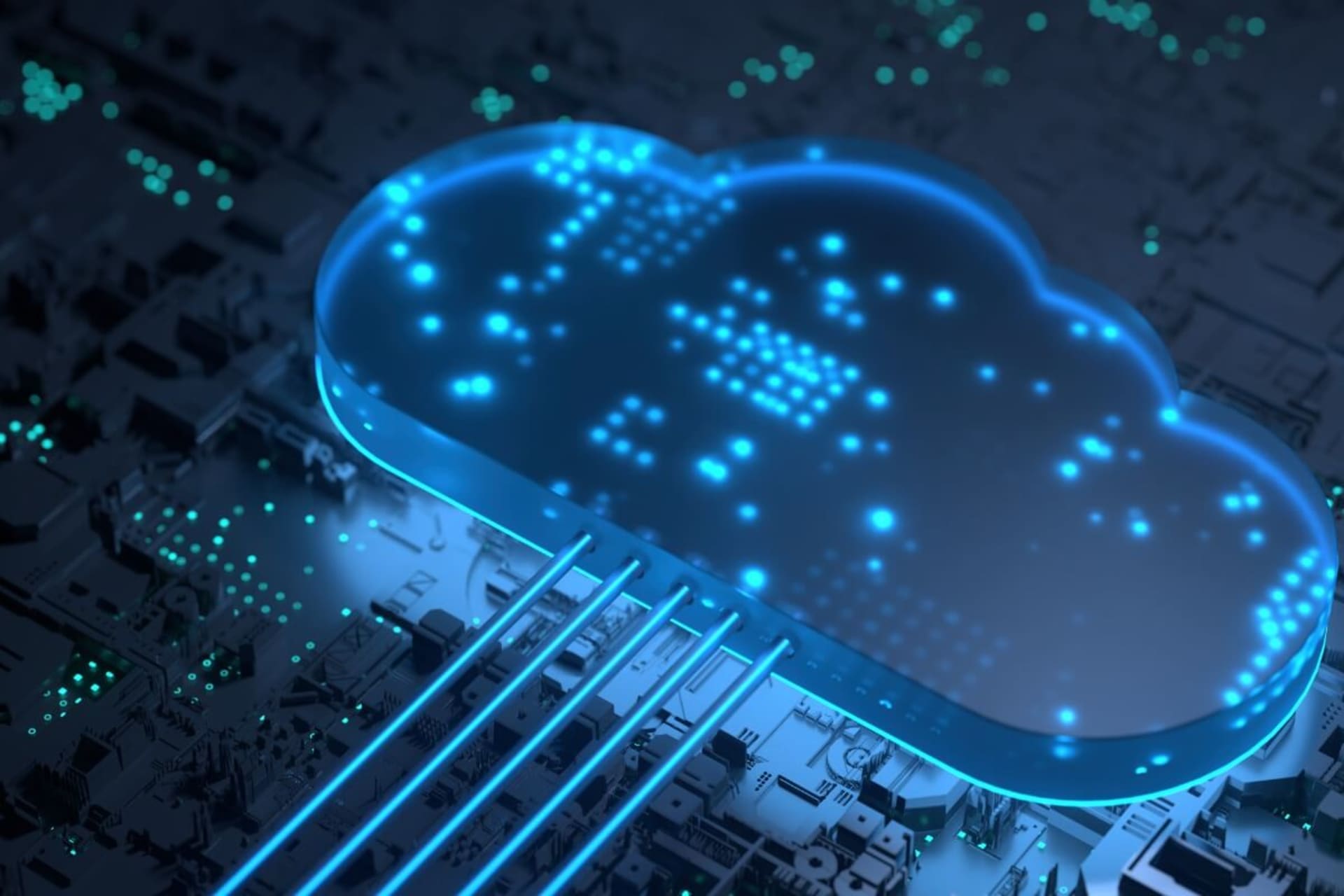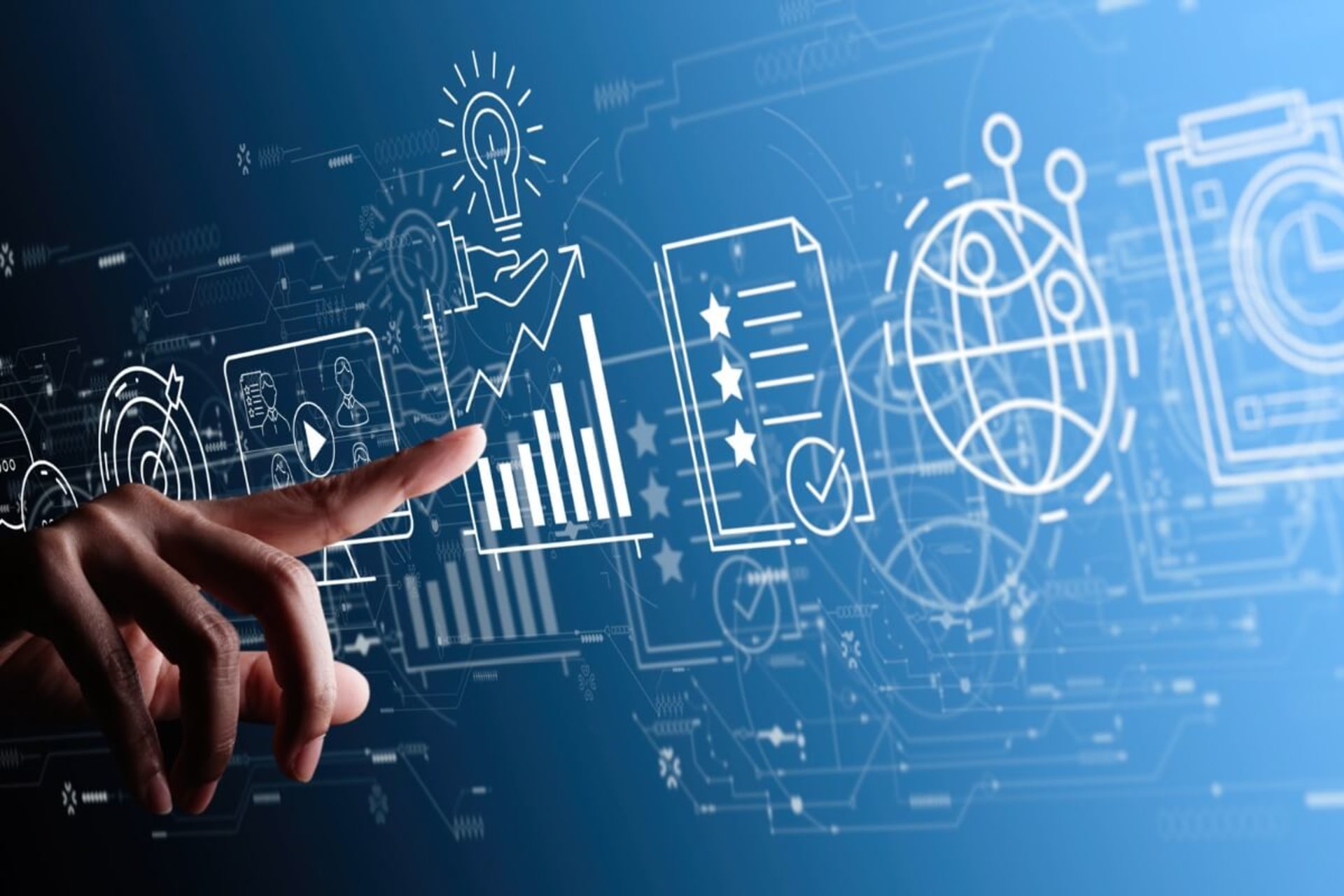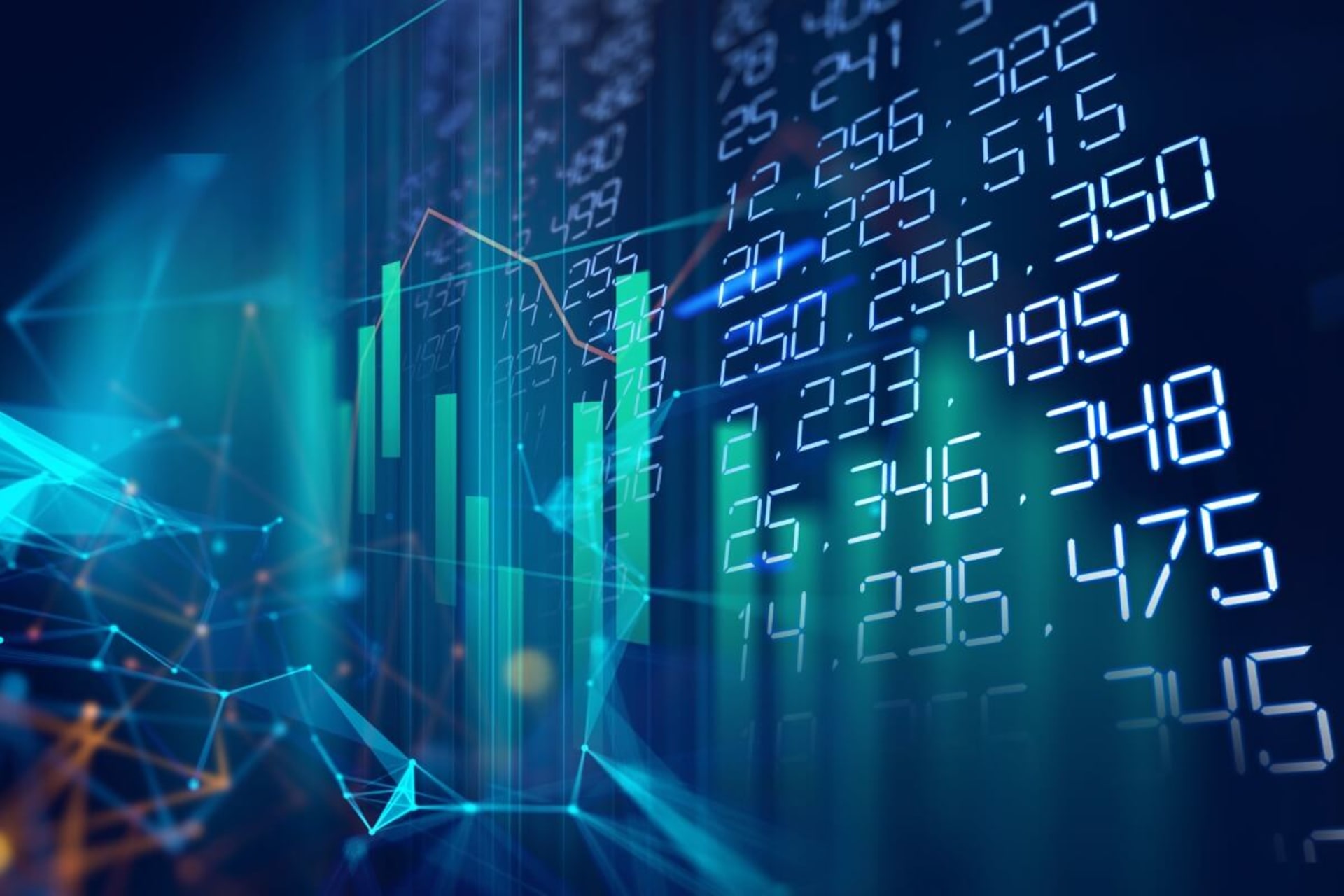Cloud computing has been a groundbreaking technology since it appeared, enabling companies to shift their spending from expensive on-premise infrastructure required for demanding computing tasks to an affordable service provided by expert data center professionals. With this shift comes the ability to easily ramp up or down work based on changing business requirements and the ability to have a more predictable computing budget.
Cloud use also enables companies to reduce spending on the space, staff, and ancillary equipment needed to maintain an on-premise computing network. Further, cloud computing provides a higher level of security than on-site computing models can deliver.
Cloud computing also serves as the foundation for other technologies, including artificial intelligence (AI), the internet of things (IoT), virtual and augmented reality (VR and AR), the metaverse, and more. Thus, anyone who wants to understand the world of technology today should pay attention to developments within cloud computing. In the following sections, we illuminate many developments that are likely to continue and evolve in the coming year.
Security
Security is the first and most important caveat to the benefits of cloud computing. Companies must be ever vigilant about the potential for cyber threats when they move their computing infrastructure to cloud environments. Additionally, more laws and regulations are being developed regularly, meaning that any security risk is also a risk to a company’s bottom line, as fines and other penalties may be levied against companies that don’t maintain proper security protocols.
As a result, cloud cybersecurity will be a heavy focus in 2025. Companies will be taking steps to protect customer data and comply with organizational and governmental rules. They will take advantage of innovative technologies such as AI and predictive analytics to identify threats early or even before they can cause problems. Security as a service will be one of the outcomes of this process.
Multi-cloud and Hybrid Cloud
A multi-cloud strategy refers to a company using services from a variety of cloud providers, depending on the areas of expertise they need. For example, they could use one provider primarily for development and another for storage. Hybrid cloud refers to the use of cloud in addition to keeping some operations within a private computing infrastructure. These strategies can be used in any combination, and both provide companies with a high level of flexibility.
Additionally, these approaches can incorporate an element of redundancy and prevent companies from becoming dependent on any provider. Keeping options open is helpful if providers change how they operate, such as shifting to a different focus or even closing down entirely. It also enables companies to change where they deploy containerized applications if needed to boost quality or minimize costs.
Both multi-cloud and hybrid cloud approaches will continue to be an important part of many companies’ cloud strategies in 2025 and beyond.
Cloud Native
The cloud-native approach refers to developing applications, services, and other digital solutions from within the cloud. Many of these solutions can run more efficiently in the cloud, so companies will adopt this strategy more in the future. Additionally, the increasing use of containers specifically will drive organizations to use this approach.
Primary benefits of a cloud-native development strategy are increased efficiency through the use of tools and cloud services, reduced costs due to eliminating the need to invest in physical infrastructure, and ensured availability because of the reliability of cloud-based services. These advantages make the cloud-native process one more companies will adopt in 2025.
Cloud-native applications consist of smaller services known as microservices. This development process creates more agile applications that take less time to create and require fewer computing resources to run. These benefits make the cloud-native approach practical for businesses that want to be more flexible, efficient, competitive, and cost-effective. The following video further describes the cloud-native approach.
AI and ML
The cloud is the perfect environment for services incorporating AI and machine learning (ML), given the extensive resources needed to develop and maintain in-house AI- and ML-capable infrastructure.
Companies that use these services depend on AI and ML services, and the cloud providers depend on these technologies. They can support the management and maintenance of the distributed networks needed to offer these services to customers, including power, cooling, and cybersecurity efforts.
According to futurist Bernard Marr, “In 2024, we expect continued innovation in this field as hyper scale cloud service providers like Amazon, Google, and Microsoft continue to apply their own AI technology to create more efficient and cost-effective cloud services for their customers.”
Edge Computing
Edge computing is the use of computer processing that takes place closer to data sources. For example, utilities might use edge computing to analyze information from advanced metering infrastructure technology to help households and businesses be more efficient with their energy use. Edge computing reduces latency, making it more efficient, especially for IoT devices. Its dissociation from other areas of the network can also make it more secure.
With this approach, the processing takes place “on the edge,” but some data might need to be sent for further processing or storage. That part of the process requires robust cloud involvement. Because of the ongoing proliferation of IoT devices and other use cases, edge computing is another cloud computing deployment that will be popular in 2025.
Low-code and No-code
No-code software development refers to using solutions designed to enable anyone to assemble websites, applications, apps, databases, analysis tools, and more without coding knowledge. Low-code development refers to the same process, except that some coding may be required to make minor changes to elements, resulting in a more flexible process than no-code.
Many no-code and low-code services are provided through the cloud, including tools like Figma, Airtable, and Zoho. In 2025 and beyond, as more companies become comfortable with the concept of citizen developers — people who work in other functions but who create digital tools themselves rather than waiting for professional developers to do so — they will rely on these tools more and more.
Cloud Gaming
Major companies like Microsoft, Sony, NVIDIA, and Amazon are offering streaming video gaming services. Slow internet speeds partially hinder these services in some areas. But 2025 will likely see 5G deployed in more areas, as well as other networking technologies that could go a long way toward solving the speed issue.
Providers are also coming up with their own solutions. According to Bernard Marr, “Google …said that the technology itself that powers Stadia will live on as the backbone of an in-development B2B game streaming service that will allow game developers to provide streaming functionality directly to their customers.”
Public Cloud
Companies can deploy private clouds, public clouds, or a combination of the two, known as the hybrid cloud arrangement. A private cloud is one whose resources are devoted entirely to one company. A public cloud is one whose resources are used to provide services to many companies.
According to Google Cloud, you can think of using a public cloud as similar to renting an apartment in that “You pay rent for a single unit,” “The building manager handles the maintenance,” and “You share the overall space with other tenants, with security around your own belongings.” It’s not an entirely accurate analogy because an apartment cannot expand to include more space, unlike the cloud service. Yet, “you can easily scale up a ‘public cloud’ apartment into a mansion…and scale back down to an apartment the next day.”
Because of their convenience, security, and cost-efficiency, public cloud options will likely increase in 2025.
Serverless
Serverless is a development model that enables developers to build and run containerized applications within a computing environment without having to manage servers. It’s important to understand that the serverless model still involves servers. But they are separate from the development process, and the cloud provider provisions maintain and scale the server infrastructure.
Developers can focus on creating and delivering their applications within containers. Once they are deployed, the apps can be scaled up or down and can continue to be run on an as-needed basis by the serverless application provider. An example is batch image file processing, which may not be needed frequently but must be available when called for.
Serverless computing offers the primary benefits of increasing developer productivity and decreasing costs, so more developers will likely take advantage of it in 2025.
Desktop as a Service
With many companies continuing with the remote work models they adopted during the pandemic and still more moving to a hybrid model (in which team members are remote part of the time and in the office part of the time), cloud-based solutions are needed to remain effective. According to Gartner, “Nearly 80% of workers are using collaboration tools for work in 2021, up from just over half of workers in 2019.”
That’s an increase of 44% since the pandemic began. In 2022 the number rose even more and will likely continue to do so into 2025. In addition to their usefulness in supporting document management, communication, knowledge management, and more, desktop-as-a-service tools are highly secure and convenient, allowing workers to perform tasks anytime from anywhere with an internet connection.
XaaS
Cloud computing enables the ability to provide various online services, including storage, security, and networks. This phenomenon is known as “anything as a service” or XaaS. One industry that is taking full advantage of XaaS is professional services. According to The Future of Customer Engagement and Experience, “Firms are packaging digital capabilities, data, or assets with people-based services. The model allows professional service providers to scale their offerings while enabling organizations to pay for outcomes rather than time spent.”
Because it provides so much flexibility and innovation potential, this market is quickly growing. Research firm IMARC Group reports that the global XaaS market reached $198.6 billion in 2021 and is expected to reach $624.1 billion by 2027.
Sustainability
Cloud services can help businesses meet their sustainability goals. According to research firm IDC, companies can achieve a 35% increase in sustainable efficiencies by using cloud-based infrastructures. This approach enables firms to reduce the amount of electricity they use and the amount of equipment they are responsible for recycling at end of life. On the other hand, cloud service providers can achieve economies of scale because they provide resources for many customers.
As companies continue to face pressure to be more conscious of environmental, social, and governance (ESG) concerns, the use of the planet’s resources is certainly one area to consider. An article appearing on Spiceworks wisely points out that not only does the cloud help companies physically be more sustainable, but “the cloud is where massive data analysis supported by a web of data networks allows scientists to identify and discover new methods to bring about lasting social and economic change.”
Because ESG concerns will only continue to grow, companies must continue to find ways to address them and look beyond the bottom line. Businesses that want to maintain favor with customers, investors, and other stakeholders in 2025 can look to this approach as one way to support the “E” in ESG.
Sovereign Clouds
Sovereign clouds operate exclusively within a specific country or region. This technology is needed because each country has its own data protection standards, and it becomes complicated for any provider to meet those standards for businesses within numerous countries. Because the list of data privacy requirements is increasing, this phenomenon is likely to drive sovereign cloud use in 2025.
This type of service is especially useful for the financial industry and other industries in which personal data must be closely protected. Related to sovereign clouds are industry clouds designed to meet the specific computing and security requirements of a specific industry, such as retail, telecommunications, and utilities. Industry clouds are another growing type of cloud deployment.
FinOps
Financial operations, or FinOps, is a process of managing cloud computing costs. It is especially useful for businesses that have adopted a multi-cloud approach. FinOps involves using optimization platforms to track cloud spending across multiple cloud deployments. According to Google Cloud, “Adoption of the cloud FinOps design principles will establish a self-governing, cost-conscious culture and promote both financial accountability and business agility in the cloud.”
Google Cloud further notes that FinOps benefits organizations by providing cost-efficiency, resiliency, and velocity. Given these advantages and the use of FinOps as a way to mitigate the potential for runaway cloud spending, 2025 is likely to see more operations adopting this approach.
Increased Storage Capacity
One of the biggest benefits of using cloud services is the large storage capacity, which can be increased or decreased easily based on a company’s changing needs. In the past, companies had to rely on on-premise infrastructure that would take weeks, if not months, to order, and set up, only to go unused if the company’s plans change.
With cloud storage, however, a company only has to manage settings to alert the provider that it needs more or less capacity. Because it has so many potential uses, storage capacity will continue to be taken advantage of in 2025.
IoT
The IoT relies on cloud computing to operate. The purpose of IoT devices is to collect data. Once that data is collected, it needs somewhere to go where processing, analysis, and storage can happen. The location where this analysis and storage takes place is typically the cloud. Using the cloud for this processing and storage creates a higher level of data security for IoT applications.
Cloud functionality for IoT networks can also enable various devices to connect. Additionally, like other cloud-based operations, IoT functionality and data processing are easily increased or reduced based on company needs. Given the expected explosion in the number of IoT devices in the coming years, an increase in cloud computing must follow in 2025.
High-level Benefits
The high-level benefits that these trends represent include cost savings, safety, ease of use, flexibility, improved functionality, innovation, and end-user benefits. For example, FinOps processes can help organizations manage their cloud spending. Security features and sovereign clouds can extend the level of safety companies can experience when using cloud services. Public cloud offerings, serverless options, and limitless storage can make the cloud easier to use. And multi-cloud and hybrid cloud possibilities boost corporate flexibility.
Meanwhile, a native cloud approach can lead to improved functionality. AI, ML, edge, and IoT are technologies driving innovation. And cloud-based gaming and XaaS offerings provide nearly endless user benefits. Given all these advantages and others associated with cloud computing, it’s no mystery why companies are adopting cloud strategies on a large scale for 2025 and beyond.






